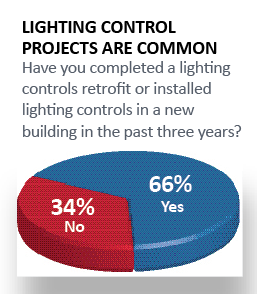Careful Planning for Lighting Controls Can Prevent Problems
At face value, lighting controls should be a simple project. It should be a binary situation, to borrow a mathematical reference, where there's dark and light, black and white, one and zero. Lights off when a facility manager wants to save money on unoccupied space, and lights on when tenants are present and productive.
The reality, of course, is that it's not that simple. It's not just black and white. It's grey much of the time.
To address those shades of grey, facility managers are increasingly turning to sophisticated lighting control systems. The range of choices available today can be daunting to facility managers. But by keeping in mind some important lessons learned by others in the field, facility managers can help ensure that the installed system meets the needs of the organization and the building's occupants.
Remember the Needs of the Space
The end goal of most lighting control projects has something to do with money. Anthony Leonard is responsible for 1.8 million square feet across 14 buildings in the northeast as Liberty Mutual Insurance Company's regional facility manager. He says that the drivers of lighting controls projects are "being a more efficient company, reducing electrical utility costs, and reducing lamp replacement costs," including all of the maintenance and labor costs associated with lamp replacement.
But to achieve those goals in the most effective way, it's essential to keep in mind the space that is being controlled. Facility managers should specify the kind and quality of light they want and need, not what components or manufacturer they want to use. It's important to remember the use of space in any organization, and to modify lighting controls to best suit the needs of the space, the organization, and the end-user.
"One man's control system is different from the next," says Avraham Mor, partner at Lightswitch Architectural. "Too often building owners get caught up in what system they want to use, or which proprietary system will work best with existing infrastructure, without considering the end goal, the end result."

Related Topics:















